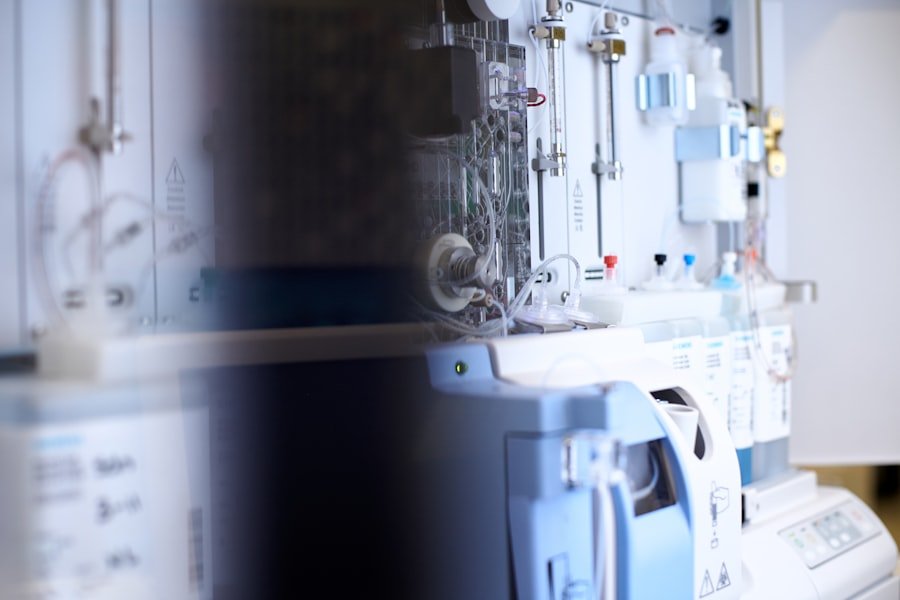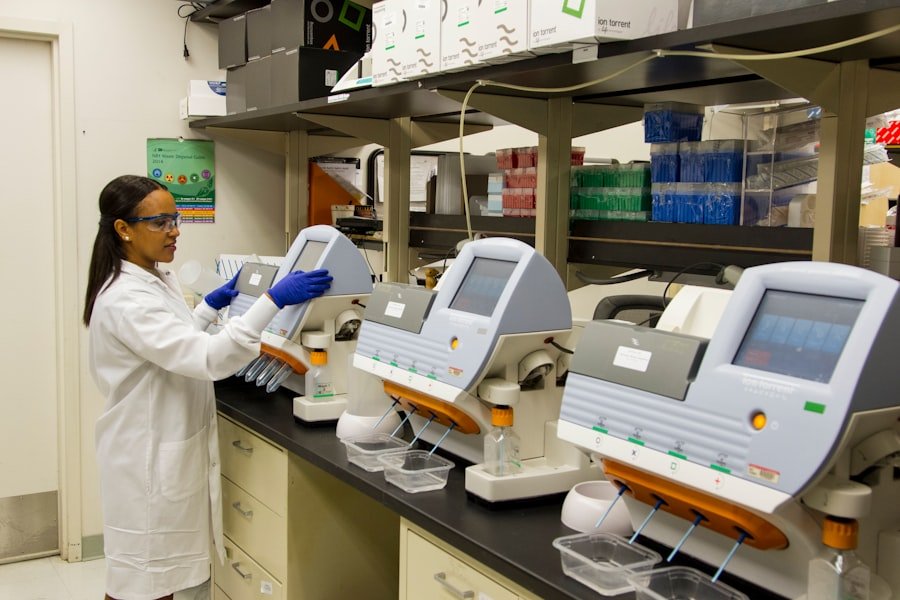Remote Patient Monitoring (RPM) has emerged as a transformative approach in the healthcare landscape, particularly in the wake of technological advancements and the increasing demand for efficient patient care. This innovative method allows healthcare providers to monitor patients’ health data in real-time, utilising various digital tools and devices. By enabling continuous observation of patients outside traditional clinical settings, RPM not only enhances the quality of care but also fosters a more proactive approach to health management.
The concept has gained significant traction, especially during the COVID-19 pandemic, which necessitated alternative methods of patient engagement and monitoring to reduce the risk of virus transmission. The essence of RPM lies in its ability to bridge the gap between patients and healthcare professionals, facilitating a more integrated and responsive healthcare system. Patients can now engage with their healthcare providers from the comfort of their homes, allowing for timely interventions and reducing the need for frequent hospital visits.
This shift towards remote monitoring is not merely a trend; it represents a fundamental change in how healthcare is delivered, prioritising patient convenience and accessibility while maintaining high standards of clinical oversight.
Summary
- Remote Patient Monitoring (RPM) allows healthcare providers to monitor patients’ vital signs and health data from a distance, using technology to improve patient care and outcomes.
- The benefits of RPM include improved patient access to care, early detection of health issues, reduced hospital admissions, and better management of chronic conditions.
- RPM works by using devices such as wearable sensors, mobile apps, and telehealth platforms to collect and transmit patient data to healthcare providers for real-time monitoring and intervention.
- Types of RPM devices include blood pressure monitors, glucose meters, pulse oximeters, and ECG monitors, which can be used to track a wide range of health metrics.
- RPM is transforming the healthcare industry by enabling more personalised and proactive care, but it also presents challenges such as data security, patient engagement, and reimbursement issues.
Benefits of Remote Patient Monitoring
The advantages of Remote Patient Monitoring are manifold, significantly impacting both patients and healthcare providers. One of the most notable benefits is the enhancement of patient engagement. By providing patients with tools to monitor their own health metrics, such as blood pressure, glucose levels, or heart rate, RPM empowers individuals to take an active role in their health management.
This increased involvement often leads to better adherence to treatment plans and lifestyle modifications, ultimately resulting in improved health outcomes. Moreover, RPM can lead to substantial cost savings for both patients and healthcare systems. By reducing the frequency of in-person visits, hospitals can alleviate some of the financial burdens associated with outpatient care.
Patients benefit from decreased travel costs and time spent away from work or family obligations. Additionally, early detection of potential health issues through continuous monitoring can prevent costly hospitalisations and emergency interventions, further contributing to overall healthcare savings.
How Remote Patient Monitoring Works

The operational framework of Remote Patient Monitoring is built on a combination of technology and data analytics. At its core, RPM involves the use of various devices that collect health-related data from patients in real-time. These devices can range from simple wearable fitness trackers to sophisticated medical equipment designed for chronic disease management.
Once data is collected, it is transmitted securely to healthcare providers via mobile applications or cloud-based platforms. Healthcare professionals then analyse this data to monitor patients’ conditions and identify any concerning trends or anomalies. For instance, if a patient’s blood pressure readings consistently exceed normal levels, a healthcare provider can intervene promptly, adjusting medications or recommending lifestyle changes before the situation escalates.
This proactive approach not only enhances patient safety but also fosters a more collaborative relationship between patients and their healthcare teams.
Types of Remote Patient Monitoring Devices
A diverse array of devices is available for Remote Patient Monitoring, each tailored to meet specific health needs. Wearable technology has gained immense popularity, with devices such as smartwatches and fitness bands capable of tracking heart rate, physical activity, and sleep patterns. These consumer-oriented products often come equipped with apps that allow users to monitor their health metrics conveniently.
In addition to wearables, more specialised medical devices are employed for chronic disease management. For example, glucose monitors are essential for patients with diabetes, enabling them to track their blood sugar levels continuously. Similarly, blood pressure monitors provide critical data for individuals with hypertension.
These devices often feature Bluetooth connectivity, allowing seamless data transfer to healthcare providers for real-time monitoring. Furthermore, RPM encompasses telehealth platforms that facilitate virtual consultations between patients and healthcare professionals. These platforms enable video conferencing and secure messaging, allowing for comprehensive assessments without the need for physical appointments.
The integration of these various technologies creates a holistic RPM ecosystem that caters to diverse patient needs.
Remote Patient Monitoring in the Healthcare Industry
The integration of Remote Patient Monitoring into the healthcare industry has been nothing short of revolutionary. Hospitals and clinics are increasingly adopting RPM solutions as part of their standard care protocols, recognising the potential for improved patient outcomes and operational efficiency. For instance, many healthcare systems have implemented RPM programmes specifically for managing chronic diseases such as diabetes, heart disease, and respiratory conditions.
These programmes not only enhance patient care but also contribute to better resource allocation within healthcare facilities. Moreover, RPM has proven invaluable in managing post-operative care. Patients recovering from surgery can be monitored remotely for signs of complications without needing to return to the hospital frequently.
This approach not only reduces the strain on healthcare resources but also provides patients with peace of mind during their recovery process. The ability to receive timely interventions based on real-time data can significantly enhance recovery outcomes and patient satisfaction.
Challenges and Limitations of Remote Patient Monitoring

Despite its numerous benefits, Remote Patient Monitoring is not without challenges and limitations. One significant hurdle is the issue of technology access and digital literacy among certain patient populations. While younger generations may readily embrace digital health tools, older adults or those from lower socioeconomic backgrounds may struggle with technology adoption.
This digital divide can lead to disparities in healthcare access and outcomes, as not all patients can benefit equally from RPM solutions. Additionally, concerns regarding data privacy and security pose significant challenges for RPM implementation. The transmission of sensitive health information over digital platforms raises questions about potential breaches and unauthorised access.
Healthcare providers must ensure that robust security measures are in place to protect patient data while complying with regulations such as the General Data Protection Regulation (GDPR) in Europe. Failure to address these concerns could undermine patient trust in RPM systems and hinder widespread adoption.
Future of Remote Patient Monitoring
Looking ahead, the future of Remote Patient Monitoring appears promising as technology continues to evolve at an unprecedented pace. Innovations such as artificial intelligence (AI) and machine learning are poised to enhance RPM capabilities significantly. These technologies can analyse vast amounts of health data more efficiently than human practitioners, identifying patterns that may not be immediately apparent.
As a result, AI-driven insights could lead to more personalised treatment plans and improved patient outcomes. Furthermore, the integration of RPM with other emerging technologies such as telemedicine and electronic health records (EHRs) will create a more cohesive healthcare ecosystem. This interconnectedness will facilitate seamless communication between patients and providers while ensuring that all relevant health information is readily accessible.
As healthcare systems increasingly recognise the value of remote monitoring in delivering high-quality care, investment in these technologies is likely to grow.
The Impact of Remote Patient Monitoring on Healthcare
The impact of Remote Patient Monitoring on healthcare is profound and multifaceted. By enabling continuous monitoring and fostering greater patient engagement, RPM has transformed traditional care models into more dynamic and responsive systems. The benefits extend beyond individual patients; healthcare providers also stand to gain from improved efficiency and resource management.
As we move forward into an era where technology plays an ever-increasing role in healthcare delivery, it is essential to address the challenges associated with RPM implementation. Ensuring equitable access to technology and safeguarding patient data will be crucial in realising the full potential of remote monitoring solutions. Ultimately, as RPM continues to evolve and integrate into mainstream healthcare practices, it holds the promise of enhancing patient care while reshaping the future landscape of medical practice.
Remote Patient Monitoring is a crucial aspect of modern healthcare, allowing healthcare providers to monitor patients’ vital signs and health data remotely. This technology has become even more important in recent times due to the COVID-19 pandemic, where remote monitoring has helped to reduce the risk of exposure for both patients and healthcare workers. For more tips on how to stand out in a job interview, check out this article on Business Case Studies.
FAQs
What is Remote Patient Monitoring (RPM)?
Remote Patient Monitoring (RPM) is a technology that allows healthcare providers to monitor patients outside of traditional clinical settings, such as in their homes. It involves the use of digital devices to collect and transmit patient data to healthcare professionals for assessment and intervention.
How does Remote Patient Monitoring work?
Remote Patient Monitoring works by using various digital devices, such as wearable sensors, mobile apps, and telehealth platforms, to collect and transmit patient data, such as vital signs, medication adherence, and symptoms, to healthcare providers. This data is then analysed and used to make informed decisions about the patient’s care.
What are the benefits of Remote Patient Monitoring?
The benefits of Remote Patient Monitoring include improved patient outcomes, reduced hospital admissions, better management of chronic conditions, increased patient engagement, and more efficient use of healthcare resources. It also allows for early detection of health issues and timely intervention.
What types of patients can benefit from Remote Patient Monitoring?
Patients with chronic conditions, such as diabetes, hypertension, heart disease, and respiratory disorders, can benefit from Remote Patient Monitoring. It can also be used for post-operative care, elderly patients, and those with complex medical needs who require ongoing monitoring and support.
Is Remote Patient Monitoring secure and private?
Remote Patient Monitoring platforms and devices are designed to adhere to strict security and privacy standards to protect patient data. They use encryption, secure data storage, and access controls to ensure the confidentiality and integrity of patient information.
